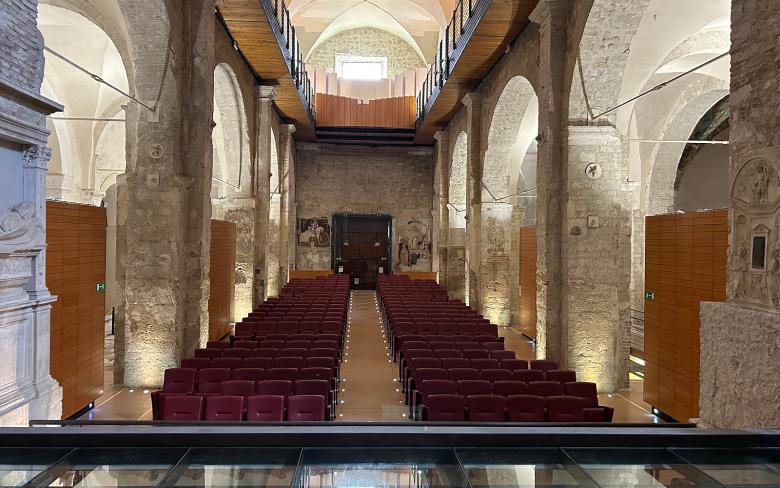He also spent a period of sickness here, during which friars built for him, next to the cave, a small cell in stone with a wood roof.
The small cloister dates back to the 1400s, when St. Bernardino of Siena arranged for a dormitory to be built, whose windows overlook on the central part of the building, as well as the refectory, which can be visited.
In the cloister it's possible to admire the chapel of St. Sylvester, brought to light with the latest restoration and where frescoes of the 1300s are preserved. From the chapel, through a narrow corridor, one reaches the room enclosing the pit, mentioned by Fioretti and Tommaso da Celano, where the water that the ailing St. Francis turned into wine was drawn.
The convent church dates back to the end of the 1500s, the chapel is very simple and preserves a beautiful mother-of-pearl marquetry cross, executed by a Franciscan friar, and an original chalice. Just uphill is the cell of St. Francis where his "bed" made by four uneven boards is preserved. Next to the cell there is the chapel with walls decorated with frescoes reproducing the episodes that happened in this place. On the left, coming out, it's possible to see the big fissure in the rock.
Today the hermitage is a house for prayer.





























.png/bfc70537-6645-2c6e-3498-5d0e7556e240?width=780)
